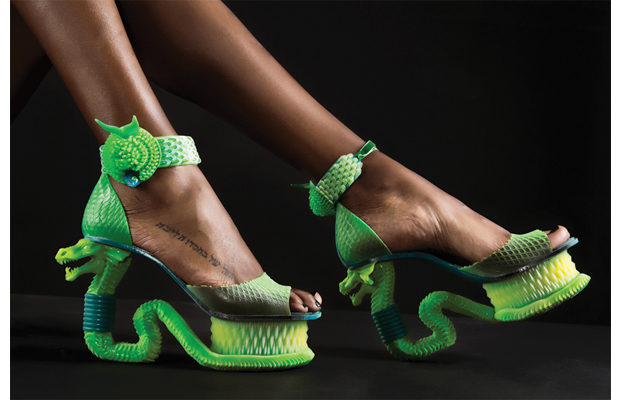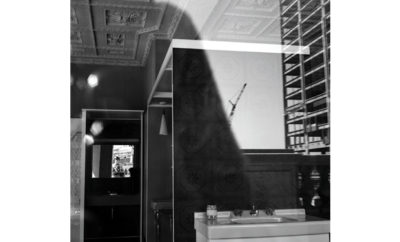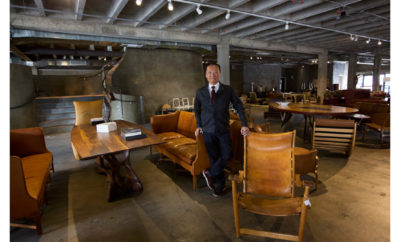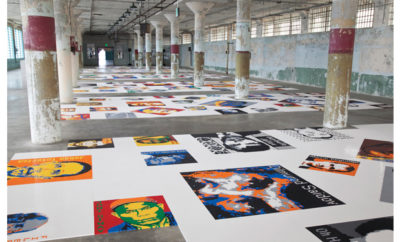
Feature
4 in 3-D
Just a few years ago, terms such as “digital fabrication,” “3-D printing,” and “CAD” began appearing in the news, piquing readers’ interest with visions of Jetsons-style consumer gadgets. Auto enthusiasts began fabricating obscure discontinued car parts with the help of the MakerBot, while Americans concerned about gun control sounded the alarm about the advent of something the writers of the second amendment could never have predicted: 3-D-printed firearms. If computer-aided design (CAD) and 3-D printing haven’t quite transformed the average household into a hotbed of automated convenience, they certainly have altered the studio landscape for artists and designers all over the world. We are witnessing the emergence of a new set of aesthetics and new ways of working for makers engaged with nearly every material. Because these technologies allow designers to scan and manipulate objects, to “copy, paste, and edit” in three dimensions, two major categories have emerged as the source material of choice: historical decorative arts and the human body.
The four designers presented here are creating new works that draw inspiration from the curves and contours of vases, chairs, and the human form.

The Wedgwoodn’t tureen was made by Michael Eden in 2008 using a plaster and gypsum material with a unique non-fired ceramic coating. Photo courtesy Adrian Sassoon Gallery.
MICHAEL EDEN is an English ceramist who was inspired to undertake an MPhil at the Royal College of Art in 2008, and became intrigued with the possibilities of rapid prototyping. While a student at the RCA, he delved into a sustained exploration of the qualities of the container, using drawing, 3-D software, and traditional forming techniques, resulting in the witty Wedgwoodn’t tureen. “A different part of my brain came alive,” Eden says, reflecting on the parallel tracks of working physically, throwing clay on the potter’s wheel, and working digitally in a realm unaffected by gravity or centrifugal force.
His recent works, part of his new Voxel series—a “voxel” is a single data point on a regularly spaced 3-D grid—consider the three-dimensional context of objects in their natural surroundings. Eden took a virtual tour of the Château de Fontainebleau via the Google Art Project. He then digitally “wrapped” the voxel cube structure around eighteenth-century porcelain vase shapes, resulting in entirely new objects with silhouettes that are at once distinctly rococo and twenty-first century. The vessels are printed over many hours using the latest selective laser sintering technology. Each Voxel vessel is unique, that is, printed once, made by additive layer manufacturing, in high quality nylon with a mineral soft coating. The interiors are finished in gold or silver leaf, Eden’s nod to the aesthetics of beauty and skilled craftsmanship of the original objects from which he drew inspiration for this project. Eden is represented by Adrian Sassoon Gallery in London.

Layers of CNC-cut plywood are clamped together to form Julian Mayor’s 2005 Clone chair. Photo courtesy Julian Mayor/21st century limited edition furniture.
JULIAN MAYOR shares Eden’s love of historical decorative arts and design. His limited edition Clone chair from 2005, inspired by a Queen Anne chair in the Metropolitan Museum of Art, was recently featured in the exhibition Out of Hand: Materializing the Postdigital at the Museum of Arts and Design in New York. Like Eden, Mayor is intrigued by the sculptural potential of combining digital and handcrafting methods. He graduated from the Royal College of Art in 2000 and worked for a time in California as a designer for IDEO, a design consulting firm. On returning to London in 2002, he had stints at Pentagram and other design studios before starting to teach 3-D modeling at the London College of Communication.

Mayor/21st century limited edition furniture.
The Clone chair, which was first shown in the Telling Tales: Fantasy and Fear in Contemporary Design exhibition at the Victoria and Albert in 2009, is the product of Mayor’s idiosyncratic woodworking method. He began by scanning an eighteenth-century side chair in the Met, manipulated the data digitally, and modeled the form using CAD software. The resulting design was then fabricated from sheets of plywood that Mayor cut using a numerical, or CNC, router, which enables woodworkers to make ultra-precise cuts. The layers of plywood correspond to the curves and carving of the “source” chair, but the finished piece is constructed in a way that is totally different from the hand-carved original. Its overall shape may be eighteenth century, but the Clone chair is very much a digital descendant. “Although the piece keeps an appreciation of the form and formality of the original,” Mayor says, “it has been transformed into something that is more about the idea of possibility. It requires some kind of relationship with the viewer to make it work, and seems to create a question mark rather than a full stop.”
One of the ways in which new technologies have revolutionized design is that makers can now easily scan the human body—a notion that may horrify those who dread bathing-suit season—yielding a three-dimensional, real-life model that previously would have required a full body cast. This means that for fashion and jewelry in particular, the curves and contours of the flesh are meeting their high tech matches like never before.

Emily Cobb’s Become Undone: The Dove neckpiece was created with glass-filled nylon and sterling silver in 2013. Photo courtesy of the artist.
EMILY COBB is captivated by the shapes and motion of animals. Her work often takes the forms of various creatures, ranging from snakes to stallions, and she finds beauty, energy, and at times pathos in animals’ life cycles. Her recent series of neckpieces, Become Undone, includes doves that drape elegantly around the neck and shoulder. The dove’s tail and wings appear to “unravel,” an effect Philadelphia-based Cobb says would be impossible without the aid of new technologies. “CAD enables me to create the animal first as accurately as possible, and then to crack/unravel/tear it apart.” She can also explore the ways a piece will sit on the body using a 3-D scan, and make design decisions before she prints a finished piece. Cobb prefers working with some of the more unusual materials available to jewelers today, such as Nylon 12, which is a flexible, white synthetic that can be painted and dyed. It’s affordable and very wearable, making it possible for her to produce works for a range of price points. Cobb’s work has been shown at the Philadelphia Art Alliance and the Tyler School of Art, where she is currently teaching in the jewelry program, as well as at the Delaware Center for Contemporary Arts and the Racine Museum of Art in Wisconsin.

Extreme Serpent shoes designed by Michaella Janse van Vuuren, 2014, for her Garden of Eden collection. The shoes were customized for the model wearing them by Uformia 3D in Norway and printed by Stratasys Connex3 in Israel. Merwelene van der Merwe studio photo.
MICHALLA JANSE VAN VUUREN is a kindred spirit: like Cobb, she draws inspiration from animals, but she is producing pieces of clothing and shoes in addition to jewelry. Working with colleagues from Israel and Norway, she has created the first multi-material multicolor fashion ensemble in the world. With a PhD in electrical engineering, she comes to clothing design with a problem-solver’s point of view. Her Garden of Eden fashion collection was created using the Objet500 Connex3 3-D printer from the Israeli firm Stratasys, a technology that allows designers to print with more than one material simultaneously and in different colors, yielding the closest thing to a finished product currently available that is printed entirely in one shot. Van Vuuren’s interpretation of the biblical creation story has a feminist twist: instead of bringing about the fall of paradise and suffering to all of her descendants, this version has Eve as the master of the serpent. Her Extreme Serpent shoes feature a stylized snake’s head as part of the stacked high heel, and a reptile-inspired surface design. The wearer literally “walks” on the serpent with each step. The collection is customizable in shape and size, not merely sized up in the way ready-to-wear clothing is usually scaled for the mass market.
Based just outside of Pretoria, South Africa, van Vuuren is represented by the Southern Guild, which after operating for six years as a collective, has opened a permanent gallery space in Cape Town. Van Vuuren’s dual identity as an artist and engineer has led her to exhibit internationally in venues ranging from the London Science Museum to Design Miami/Basel. For the Garden of Eden series, she worked closely for nearly six months with Daniel Dikovsky and Tal Ely of Stratasys’s materials research and development team to develop the printed prototypes, and she collaborated with the Norwegian firm Uformia to customize the finished garments using body-scan data. Her hope is that this way of creating clothing can accommodate a multitude of body types.

Van Vuuren’s Stained Glass corset from the Garden of Eden line debuted in February 2014. 3-D printed on the Stratasys Connex3 multi-material multicolor printer, it is customizable using body scans. Yoram Reshef photo.
Like Eden, Mayor, and Cobb, van Vuuren is charting new territory in the digital realm, where forms are unaffected by the physical world. This world has its own aesthetics, quite distinct from the traditional fields of jewelry design, furniture, ceramics, and fashion. Their pixelated splendor is a fresh way of thinking about form. It is a new industrial revolution that puts the individual consumer back at the center of the picture, body-scan data and all.












